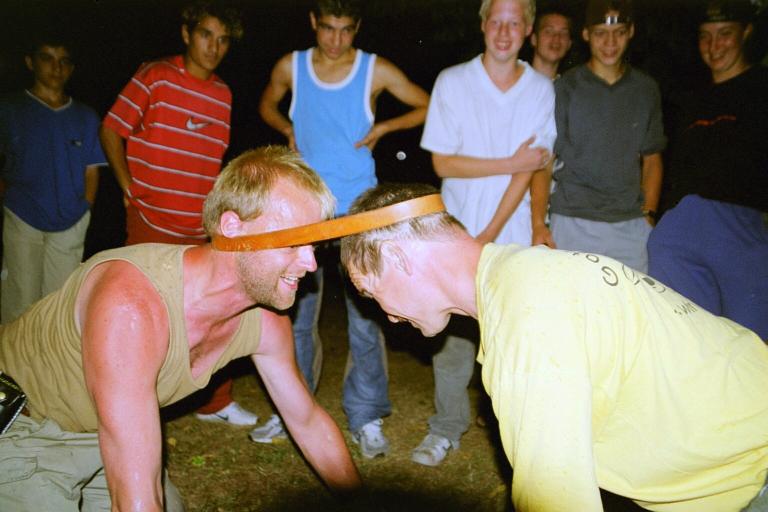This terrain game is usually played in larger cities. With the help of sporadic clues to the whereabouts of the unknown "Mister X", he is pursued by several groups with the aim of identifying and capturing him. The game is based on the board game "Scotland Yard"
The board game "Scotland Yard" is set in London. Hiding somewhere in the streets is the mysterious "Mister X", who is being hunted by Scotland Yard agents. These move around the board for all to see, while the player who has taken on the role of Mister X only occasionally reveals his current whereabouts on the board. The game is over when an agent is at the location where Mister X is at that time, or when Mister X could not be caught for a certain number of turns.
Basic plot
As with the original, the board game "Scotland Yard", it is also here to catch a certain, mysterious person. The main differences are that this takes place in a real city and not on a game board, that the agents usually don't know "Mister X" and that the agents are travelling in small groups
The agent groups are told sporadically, e.g. every 5 or 10 minutes, where Mister X is currently staying. By clever tracking, the groups must first succeed in recognizing Mister X in order to be able to catch him afterwards.
The agents have to find out where Mister X is at the moment
The playing field
Slightly larger to very large cities are particularly suitable for this game, in which ideally various means of transport are also available (trams, buses, suburban trains, etc.). If Mister X and the agents get day tickets for the public transport, they can move flexibly in the whole city and the game gets a big dimension. However, you can also play the game in medium-sized cities without having to use public transport. Possibly, it can be done with bicycles as well.
The playing field should be clearly delineated. This can (and should) be determined by
- outwards - where are the boundaries?
- as well as inwards - is Mister X allowed to be in a shop/store or does he basically have to be on public thoroughfares?
done. How much the area should be narrowed down depends on the complexity of the playing field, the number of agent groups and their abilities (with three to four groups of younger children it must be much easier than if ten or fifteen groups of teenagers are searching for the Mister X).
Possibilities for communication
- The telephone variant: Mister X contacts the "head office" again and again by telephone/mobile phone in order to pass on his location. The agents do the same to find out Mister X's location, which was given through last. A rather elaborate way of communication, where the agents often only learn the last location of Mister X after an enormous delay.
- The SMS variant: Mister X gives his location sporadically via SMS. This is either sent to the "central office", which in turn forwards this info to the agents, or the SMS goes from Mister X directly to all agent phones. The latter can be implemented quite easily with many mobile phones via the group SMS function. Simple and quick to implement. However, Mister X is then quickly noticed by writing SMS and there are sometimes high costs for the sent SMS depending on the mobile phone tariff.
- The GPS variant: On current smartphones, location apps such as "Google Latitude" can be installed, through which you can give your current position to friends. Some of these apps do this automatically at certain intervals. In this way, agent groups can regularly find out Mister X's current position. This is a variant for technology freaks - but there are supposed to be some in almost every team. Advantage for Mister X moreover: he does not reveal himself by phoning or texting, since he never has to take his cell phone out of his pocket.
- Combinations of the aforementioned variants: For example, with the GPS variant, only the "headquarters" can get access to the location data and sporadically send out the current position to the agents via SMS. In doing so, the current position can often be described much more precisely than if Mister X would do this under stress. In addition, the "headquarters" can vary the frequency of the SMS depending on how successful the groups are. For example, if no group succeeds in identifying Mister X for an extended period of time, the broadcast frequency can be increased to support the groups in their efforts.
It is also helpful to clarify how the groups can communicate with each other.
Incorporating plots
To make the game more exciting and versatile, plots can be incorporated (e.g. blast command). Thus, clues to the outward appearance of Mister X could be hidden in the playfield. Furthermore, an entire story can also be created around the character of Mister X, creating changing game situations.
Image credits
- Caption: © Günter Havlena / pixelio.de
Content may be automatically translated. Help improve the quality of the translation with your editing!




